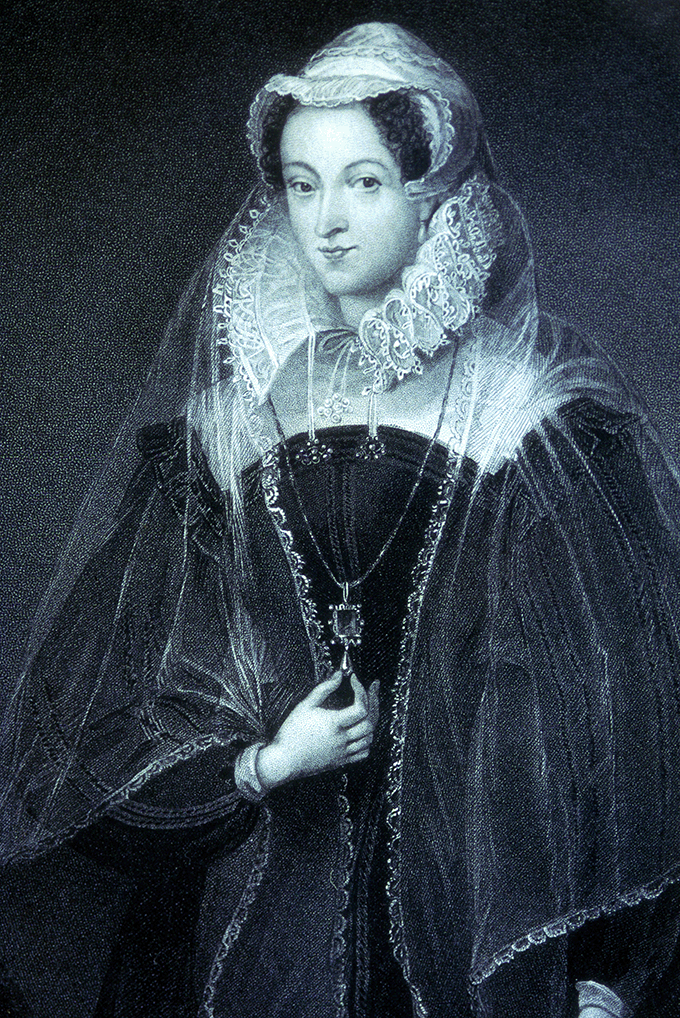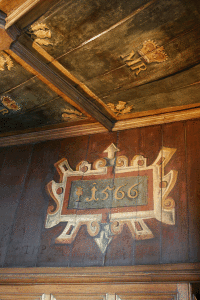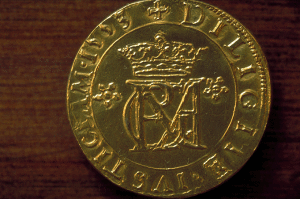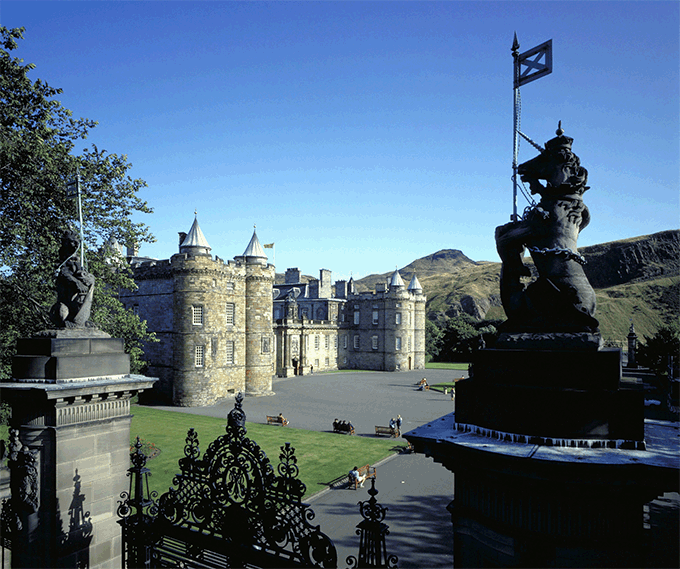Lord Darnley, the spouse of Mary, Queen of Scots, was not a good husband, so when he and his manservant were found dead at Kirk o’Field in 1567, suspicion fell on his famous wife, but the Royal Society of Edinburgh recently re-opened the case…
Everyone loves a good whodunnit – and the question of who killed Henry Stewart, Lord Darnley, the dashing but dastardly husband of Mary, Queen of Scots, has remained unanswered since his death in 1567, though, for many, his royal wife has remained the prime suspect.
Recently, the Royal Society of Edinburgh reopened ‘cold case’ of Lord Darnley’s murder with the help of modern investigative techniques. Professor Sue Black, director of the Centre for Anatomy and Human Identification at the University of Dundee, chaired a multidisciplinary team at Jedburgh Town Hall on September 24, including a historian, pathologist and fire and explosions expert, who examined the evidence as they would a fatal accident inquiry – “the equivalent of a coroner’s inquest, if you like,” explains Professor Black.
“John Dunn, who is the procurator fiscal for east Scotland, said he would be happy to run it as an extremely unconventional fatal accident inquiry, because, though it wouldn’t follow the normal procedures, he would keep it within the legal guidelines of what was evidence and what was expert witness testimony.
“We decided that, first of all, we needed to have a historian, so Dr Karly Kehoe, who’s from Glasgow Caledonian University, very much set the political and the religious and the societal backdrop, so people were aware of who the major players were, who stood to gain from a fatal event, who stood to benefit the most and who was likely to be the victim. Her rationale was to set the backdrop.”
After the death of Lord Darnley at Kirk o’Field, a crucial document called the Kirk o’Field map was created. “It’s called a map, but it’s like an image,” explains Professor Black.“It was drawn by Lord Cecil, who was fundamentally a spy for Elizabeth I. It’s not a single snapshot because it shows a number of events and it’s almost like a cartoon… It shows the destruction of the buildings; it shows the bodies in the orchard; it shows William Taylor, who was the manservant, being buried; it shows Darnley’s body being taken away – not all things that happened at exactly the same time but that are being conveyed in this pictorial form.”

The evidence at the time was gathered from witnesses.“But the different witnesses were on different sides,” explains Professor Black.“You’d get evidence from Mary, Queen of Scots’ side; you’d get evidence from Darnley’s side; you’d get evidence from Elizabeth I’s side. Everybody had their own slant. What we decided we would do is we would bring forensic science into this picture and we’d do it from the perspective of not being influenced by the evidence that was out there, but really coming to our own conclusions as much as we possibly could.
“The two points that were really interesting were: first of all, can we determine where the explosion occurred? If we can, we can determine if it was planted to kill the queen, to kill Darnley or to kill them both.”
Professor Niamh Nic Daeid was the team’s expert on fires and explosions. “She was able to place what the most likely location of the explosion could have been, which tells you where the gunpowder was deposited,” says Professor Black.“There were two buildings: there was the salle, which is a large building where the queen and her entourage where expected to return to that evening from Holyrood, and there was, next door, the Old Provost’s House, where Darnley’s bedchamber was. What Professor Niamh Nic Daeid was able to determine as far as possible from the evidence that we’ve got is that it was much more likely that the explosion was set under the salle than under the Old Provost’s House.”

However, the queen did not return to Kirk o’Field that night.“She was probably tipped off,” says Professor Black, “so although her entourage returned, she wasn’t with them. Darnley was in the house next door, which was in a very dilapidated state, so, because the explosion was in the salle, it took down the Provost’s House as well. It seemed likely from what we’re suggesting that, if in fact the explosion was based under the salle, the intended victim was the queen.”
As to whether this clears her, the jury’s still out. It’s certainly possible that Mary, Queen of Scots knew about the explosion and didn’t warn her husband. “He was a bit of an embarrassment and he wasn’t very nice to her,” says Professor Black. “She had a rather difficult, embarrassing marriage, but she wasn’t the only one who wanted rid of him and, I’m not a historian, but there are quite a few people who say the only redeeming quality Lord Darnley had was he was quite nice to look at, but everything else was pretty horrid. So he had his own enemies – not only the queen.”
“But there’s the possibility, that both of them were intended to go in the explosion. Now that points to some of the Protestant lords in Scotland and it points to south of the border to Queen Elizabeth I as well.”
“That was what the explosion could tell us, and that was important, because it asks the question: why would the queen set off an explosion in her own premises where she was most likely to be the victim? If she was aiming for her husband, she would have put it under his bedroom. It doesn’t necessarily let her off the hook, but it certainly casts some doubt if that were the right and logical place for an explosion to be put.”
Interestingly, however, it seems that Darnley was not killed by the explosion that night. How did he die? “There are three possible ways Darnley met his end of days,” says Professsor Black. “There was one which Dr Richard Shepherd, a pathologist, ruled out as ludicrous, which says that in the explosion Darnley and his manservant were blown through the window of the Provost’s House, across the Flodden Wall, which is about five foot wide, and into the orchard about 30 yards further down where the bodies where found – and there was not a mark on them!

“So he didn’t die in the explosion. Therefore that means that he managed to get out of the building before the explosion occurred, because the building he was in was reduced to rubble. That suggests that either he knew the explosion was going to occur, or it means he was tipped off as well. Did he set the explosion for the queen or were both of them tipped off?”
However, someone obviously did want Darnley to die,“because if he got out of the Old Provost’s House, somebody made sure he didn’t escape beyond the orchard. Whether his throat was cut – though this wasn’t represented, of course, on Cecil’s image, that’s not something that Queen Elizabeth I would have wanted put out there as propaganda, or whether he was suffocated, which was another suggestion, with a cloth soaked in vinegar put over his face, that we can’t tell. But clearly there was a faction that was hoping Darnley would die in that explosion.”
“It was great fun,” Professor Black says of the investigation.“It’s really just about exploring the evidence from a slightly different perspective, but now the Marie Stuart Society think we’re absolute heroes, because poor old Mary, who’s been vilified for so long, is now looking a little bit cleaner, but, of course, the intrigue associated around all of it is going to continue. What we try and do at the Royal Society of Edinburgh is to engage the public with this combination of history and science and to find out, as the science advances, if we can look at the history in a slightly different light.”






 © 2024
© 2024